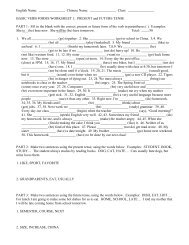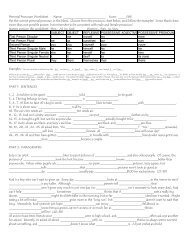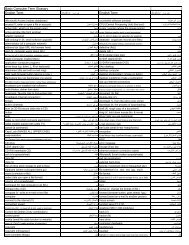Presidential Candidate Viability & Partisan Online ... - Omnifoo.info
Presidential Candidate Viability & Partisan Online ... - Omnifoo.info
Presidential Candidate Viability & Partisan Online ... - Omnifoo.info
Create successful ePaper yourself
Turn your PDF publications into a flip-book with our unique Google optimized e-Paper software.
from certain about their preferred candidates. 8<br />
<strong>Candidate</strong>s who do not win a single contest out of the first few<br />
face great difficulties in justifying the continuation of their campaigns, mostly dropping out and becoming the<br />
smallest of historical footnotes. With three different winners in Iowa, New Hampshire, and South Carolina,<br />
consistently strong showings by a candidate with a particularly strong online support network, these<br />
expectations took longer than usual to be met in 2012. 9<br />
With the world at one’s fingertips, agenda-setting power of mass media could be effectively reduced<br />
to near zero if everyone suddenly became an internet news junkie, surveying every site on every issue almost<br />
every day. While this is obviously unrealistic, or at least decades away for even the most ravenous addict, the<br />
Pew Research Center has tracked a gradual increase in the portion of media consumers who get political<br />
<strong>info</strong>rmation or news online, with the latest figures from 2010 showing 73% of adult internet users (or 54% of<br />
all U.S. adults) doing so for the 2010 elections. Of these, 32% (or 24% of all U.S. adults) got most of their<br />
<strong>info</strong>rmation and news online. 10<br />
In a year with a single-party presidential primary which attracts more partisan<br />
attention, use of online sources should have continued an upward trend, and partisan online sources are likely<br />
to have reached more potential voters.<br />
8 This study, focusing on media coverage in the year before the primaries, would likely have to be called “pre-distant” for preceding<br />
even the earliest contests (other than the dubiously relevant Iowa straw poll in the summer). In previous election cycles even looking<br />
at the “distant” phase had to be carefully justified, but this study argues that the new and increasing phenomenon of constant<br />
campaigns under unrelenting media scrutiny (arguably concomitant with rising internet usage) makes this further extension of<br />
temporal focus back in time eminently worth scholarly consideration. Pfau et. al. also find that talk radio was the most influential<br />
medium <strong>info</strong>rming voters’ impressions of Republican candidates, and while the partisanship of talk radio has not shifted significantly<br />
away from the right since the 1990’s, one would expect partisan websites today to rival, supplement, or amplify radio and TV pundits’<br />
effect on partisan devotees.<br />
9 With each victory in the 2012 primaries, Mitt Romney’s campaign did its best to project an image of electoral momentum, always<br />
contested by the other candidates, especially after they won other states. Knowing the effects that momentum carries, media were<br />
particularly vulnerable to claims that they had an interest both in making the primaries appear more contested and also extending<br />
them as dramatically as possible. The difficulty of establishing objectively whether something as nebulous as momentum behind a<br />
particular candidate exists (is there a minimum number of victories, or is a streak of uninterrupted victories necessary?) provides<br />
considerable cover for the media to defend their neutrality.<br />
10 See Smith (2011) for the Pew Internet & American Life Project on the 2010 election. Hindman’s 2009 book also gets an update from<br />
the Pew Center in Olmstead et. al.’s article on internet users’ demographics and how they reach news sites online. One of the latter’s<br />
key findings is that most online news consumers are only casual users, visiting only a few times a month and not for very long, but a<br />
significant number are also “power users” who visit regularly, even daily or more frequently, tending to spend more than an hour on a<br />
single site. Clearly “Web 2.0” user-generated content, its greater interactivity, accessibility, and diversity, offer internet news junkies<br />
even greater resources than one who limits him/herself to cable news. Whether a supplemental or primary source, however, the<br />
proliferation of political blogs and sites suggests that even if “everyone is talking and no one is listening” (to paraphrase Hindman’s<br />
reservations about the political power of online media), there are still certainly a lot of people who care about “hard news” and choose<br />
to follow it online.<br />
4






